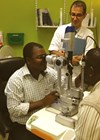Introduction
DR-NET eye health professionals in low- and middle-income countries (LMICs) have, since 2015, been able to access training in diabetic retinopathy (DR) grading provided by Gloucestershire Retinal Education Group (GREG). GREG, led by Professor Peter Scanlon and based at Gloucestershire Royal Hospital in the UK, has been running educational courses for over 10 years.
The course team are experts in medical retinal diseases and are experienced in curriculum development and learning delivery. They offer a range of university-accredited qualifications specifically in diabetic retinopathy and optical coherence tomography, as well as an extensive collection of other ophthalmic courses for staff working within this specialty [1]. The Certificate in Diabetic Retinopathy Screening was developed specifically for people working outside the UK who had no access to a recognised qualification in diabetic eye screening.
Working with NHS England, GREG also provides the unique quality assurance system (Test & Training (TAT)) for readers (graders) of diabetic retinopathy screening images in England, with an international (iTAT) version also available [2]. The iTAT system is supporting DR-NET eye health professionals.
Certificate of Higher Education in Diabetic Retinopathy Screening
Since 2015, DR-NET participants have been completing the Certificate of Higher Education in Diabetic Retinopathy Screening. Students have come from 14 different countries across Africa, the Caribbean and Asia and consist of trained ophthalmologists, screeners and graders, all of whom have had the opportunity to undertake the training and gain a qualification not previously available to them in their own countries.The qualification is suitable for individuals employed in health institutions undertaking digital diabetic retinopathy screening where they are involved in both screening patients and grading images.
The qualification is awarded by the GREG in partnership with the University of Gloucestershire. Subsidiary awards within this qualification are provided for those who perform only a screening or a grading role.
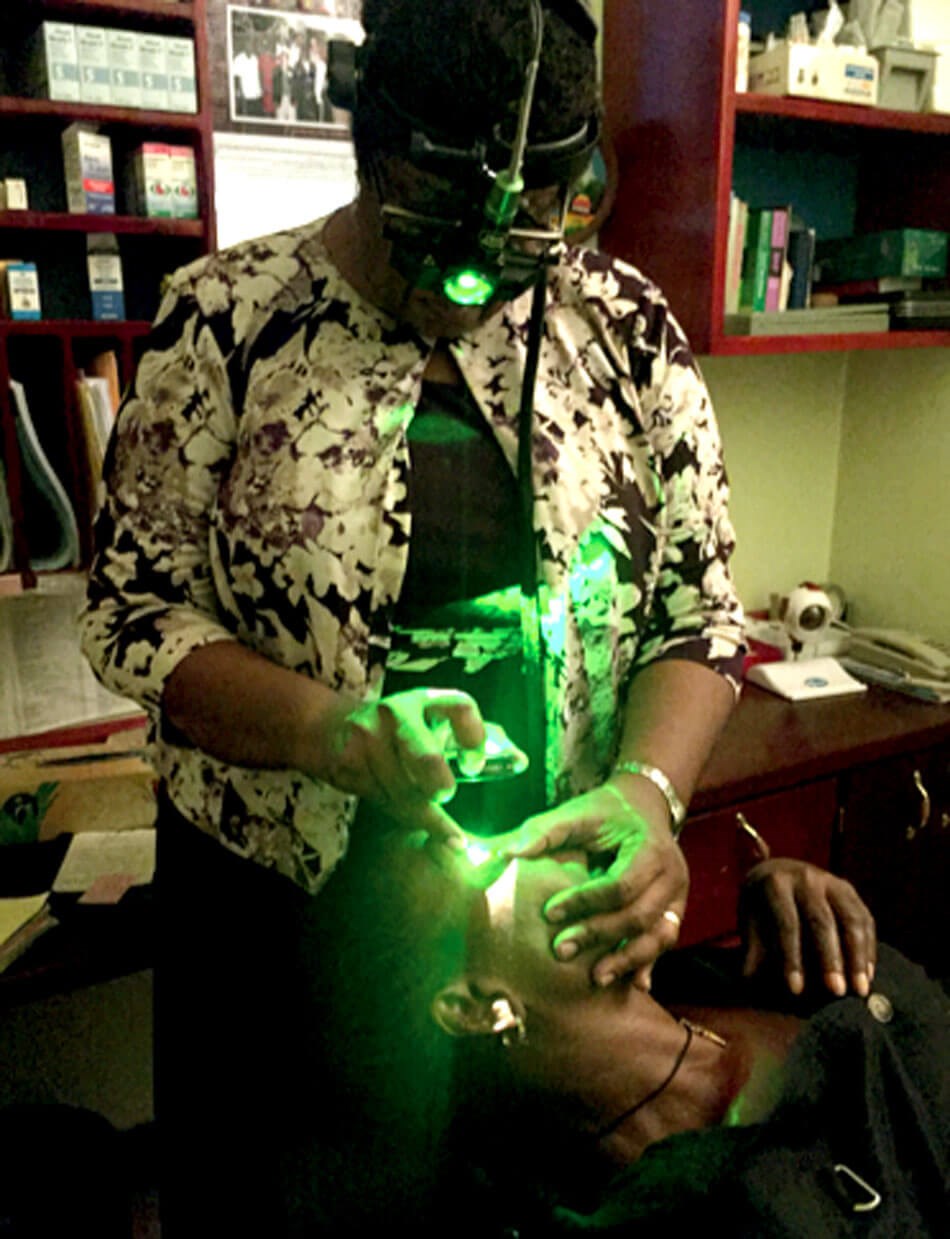
Hazel Shillingford-Ricketts, consultant ophthalmologist in Dominica,
treating a patient with vision-threatening diabetic retinopathy.
Course aims
The course aims, through directed learning and structured assessments, to help students develop and gain recognition for their knowledge and skills in diabetes mellitus, screening for diabetic eye disease and the processes and equipment commonly used in screening. They also develop the skills required to identify the appearance and significance of retinal damage caused by diabetes and learn how to identify and therefore reduce risks associated with diabetes in the development of sight-threatening retinopathy. This improved knowledge, understanding and best practice supports and promotes their job role to reduce preventable loss of sight caused by diabetes.
The course is made up of five modules:
- An Introduction to the Study of Diabetic Retinopathy Screening
- Diabetic Eye Screening Programmes, Processes and Protocols
- Preparing the Patient for Diabetic Eye Screening
- Performing Retinal Screening
- Assessing Retinal Images.
Each module is individually assessed with online exams, and in addition, in the module Preparing the Patient for Diabetic Eye Screening, students are also required to complete an observation in the workplace. A local authorised clinical assessor observes the student testing and recording visual acuity in a minimum of 10 patients, using a selection of visual acuity charts.
In the module Performing Retinal Screening, two assessments are carried out: firstly, the clinical assessor will observe the student instilling dilating (or similar non-active sterile) eye drops in both eyes of a minimum of 10 patients, and then photographically screening a minimum of six patients who are ready to have retinal screening imaging.
Students must complete and pass all modules and assessments to gain the full Certificate of Higher Education in Diabetic Retinopathy Screening. DR-NET students’ fees were covered through grants from the Queen Elizabeth Diamond Jubilee Trust to the VISION 2020 LINKS Programme and from the ‘Seeing is Believing’ initiative funded by Standard Chartered Bank to GREG. These grants also supported students’ access to iTAT over several years.
“I enrolled and completed the Certificate of Higher Education in Diabetic Retinopathy Screening in 2018.
The course was well structured and very informative, and each module was designed to provide the details that would further enhance the practical training received. My team and I were able to make use of what we learnt and were tested on it by implementing it daily at our diabetic retinopathy screening clinics.
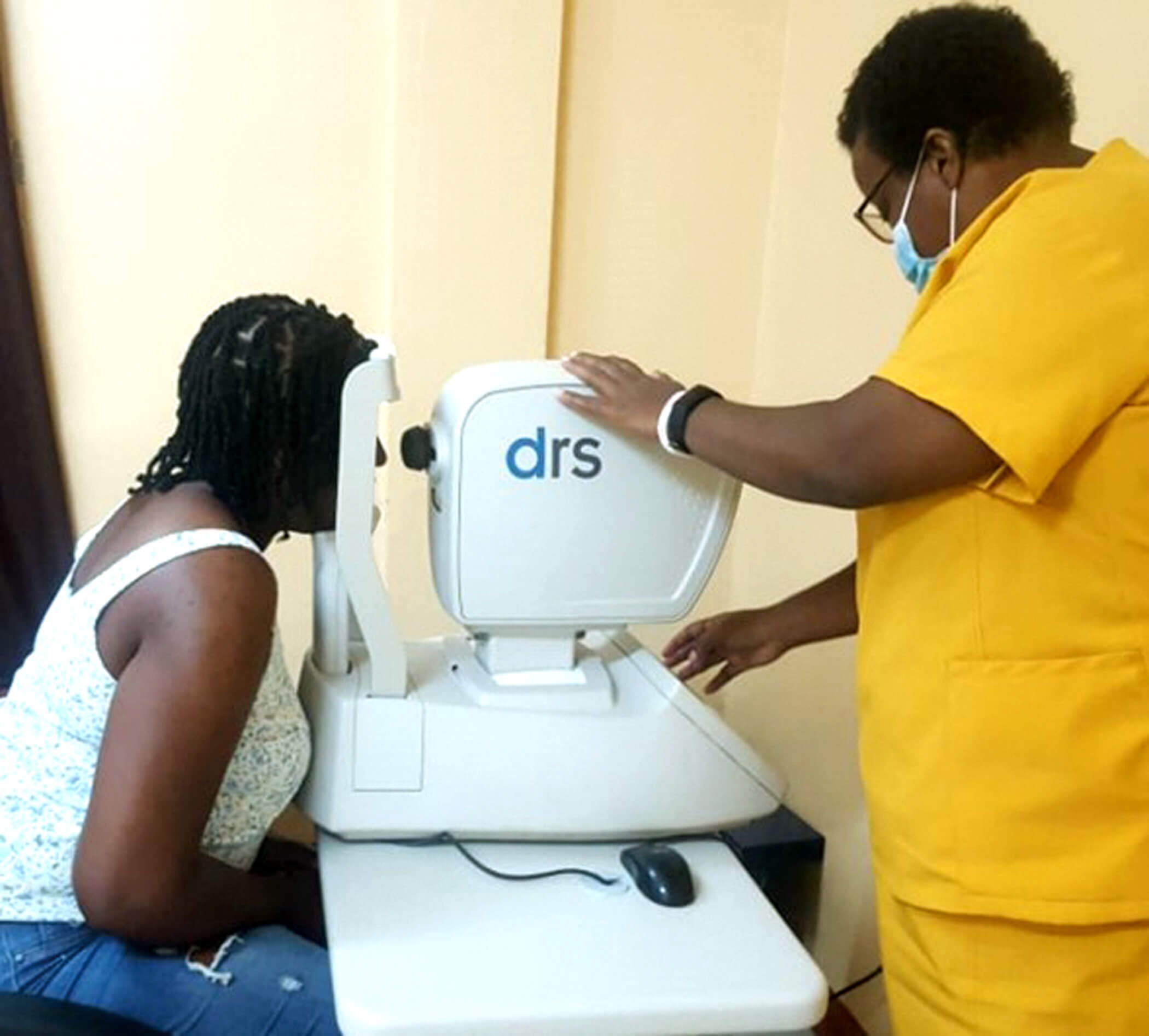
Team member Health Aide Carol Laurent using a retinal camera with a patient.
There was a module called ‘Preparing the Patient for Diabetic Eye Screening’. It encouraged us to speak to the patient before each procedure in order to inform them of what was going to be done and what to expect during the examination. This way they were able to be comfortable throughout the screening.
The training we received during this programme enabled us to be more efficient in rendering this much needed service. It made us more confident in our grading of retinal images. This way we were able to expand the clinic to reach a greater number of patients on the island and offer them the care they needed, making us better able to serve our patients throughout Saint Lucia.”
International Test and Training
On successful completion of their qualification, all DR-NET students have been given the opportunity to complete monthly grading training sets, which is essential to help in consolidating learning.
TAT (Test and Training) and the international version iTAT are internet-served monthly quality assurance and training support systems for readers (graders) who work in systematic diabetic eye screening programmes. The original TAT system is a mandated requirement for the 1250 graders who work within the national Diabetic Eye Screening Programme in England and has been provided by GREG for the past 13 years. The iTAT system is equally useful to new or experienced screening staff and to staff wishing to improve their skills in the detection of diabetic retinopathy from ophthalmic images.
TAT and iTAT provide graders with access to monthly sets of retinal images from 20 eyes and they must identify and classify the retinopathy features present in the ‘ground-truthed’ images. Each set of 20 cases is randomised at the point of delivery, so no two people see cases in exactly the same order.
After each month-end, graders can compare their responses and feature-list with the system results and the results of their local peers.
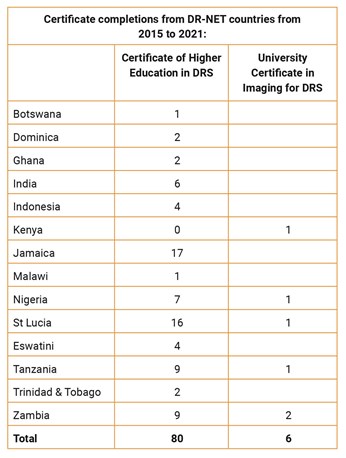
There are also over 40 training sets to which graders have unlimited access. The ground-truthed guide grades for these are immediately available, allowing graders to review and compare their answers straight away, to increase and enhance their grading knowledge and skills.
iTAT is extremely beneficial both as a quality assurance tool and learning system. Participants are grouped by local programme or country (depending on numbers) which allows an experienced clinician to have access to local results and provide hands-on training where required to improve the quality of grading. This is the approach undertaken by the English National Screening Programme and has been running successfully since 2010.
Currently on iTAT there are 50 DR-NET Graders registered on the system, as follows:
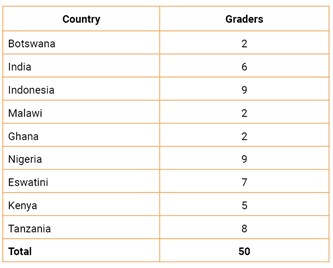
Providing this service to countries where the internet infrastructure is an ongoing challenge does affect participation. Despite this, the uptake is positive, and the historical training sets are recognised as a very useful tool to teach participants and other trainees. DR-NET is grateful to Roche Products Limited for a grant to DR-NET that is enabling graders to access iTAT during 2022 and 2023.
Undertaking the Certificate of Higher Education in Diabetic Eye Screening and then subsequent participation in iTAT sets gives DR-NET health professionals the opportunity to consolidate their learning and ultimately improve the quality of care provided within the diabetic eye screening service.
“Diabetic retinopathy grading training is a valuable and consistent learning programme provided by iTAT. Each month candidates need to assess 20 fundus photographs and receive feedback on their accuracy.
From Indonesia, especially Sulawesi, nine candidates have joined this programme: four residents and five ophthalmologists. In our country, fundus photographs are only available at eye clinics and hospitals and there are no trained graders; it is done by ophthalmologists.

iTAT DR grading is very helpful in increasing our ability to recognise signs of diabetic retinopathy on fundus photos and to make accurate diagnoses and decide treatment plans. We also share with other friends about this system.
Our team is the community team at the Ophthalmology Department of Hasanuddin University. We conduct weekly eye disease screening at the primary health centre in Makassar, including DR screening using fundus photography in our Mobile Eye Clinic (provided by Lions International).
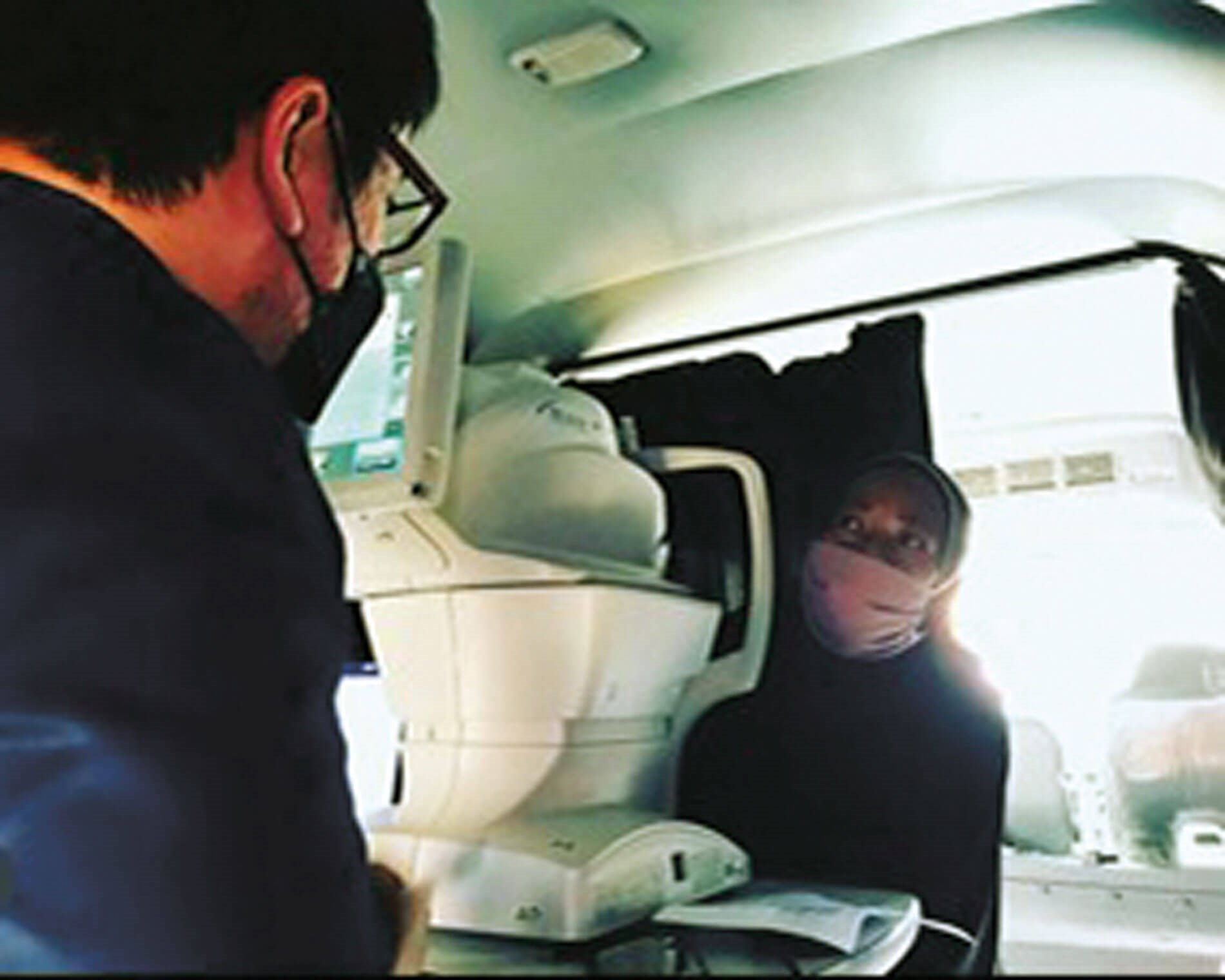
The mobile unit has a photocoagulation laser. If cases are detected, the patients are asked for consent for further treatment. For patients who need photocoagulation laser, we will do it at the mobile eye clinic, if the patient agrees and the condition makes it possible. But if not, we refer the patient to Hasanuddin University Hospital for vitrectomy or laser and for collaboration with the endocrine department for systemic treatment.”
- Andi Suryanita Tajuddin, Consultant Ophthalmologist, Hasanuddin University, Makassar, Indonesia.
DR-NET Workshops and Grading Grand Rounds
DR-NET Virtual Workshops are held six-monthly, in June and November each year. A dedicated website has been set up to host the workshops and enable sharing of resources [3]. Readers are invited to participate in future Workshops by registering on the DR-NET website at: https://www.dr-network.org/register/
The LINKS Programme team runs online live group training sessions for graders - ‘Grading Grand Rounds’ – three times per year, where retinal images are shown and each is graded anonymously by the participating graders. There is also a talk during each session, sharing learning for example about a specific aspect of DR, or discussing the pros and cons of specific types of equipment of relevance and interest to the participants. Feedback from these sessions is highly positive.
Summary
The initial training and ongoing testing of graders is essential as DR services in LMICs develop, in order to ensure accurate referrals for people living with diabetes whose sight is threatened by DR. Training for graders, and ongoing learning, through the Certificate and iTAT, and the other opportunities offered through DR-NET, is underpinning the development of much-needed DR services. More trained graders will be needed in the future as the number of people living with diabetes in LMICs grows.
References
1. Gloucestershire Retinal Education Group.
https://www.gregcourses.com/
2. Test & Training.
https://www.gregcourses.com/test-and-training
3. DR-NET. https://www.dr-network.org/
[All links last accessed December 2022].
COMMENTS ARE WELCOME









